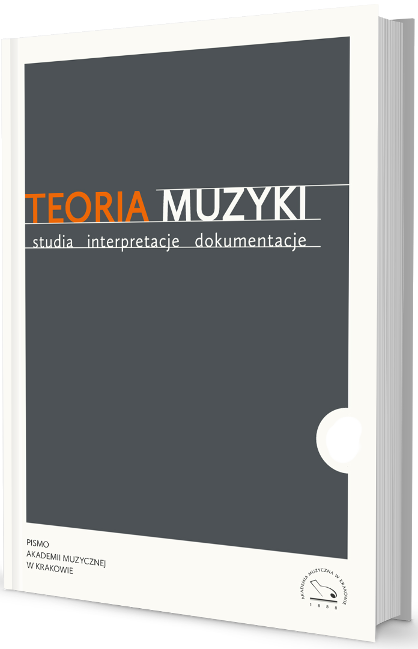Grieg a Karłowicz
Grieg versus Karłowicz
Author(s): Wojciech StępieńSubject(s): Music
Published by: Akademia Muzyczna w Krakowie im. Krzysztofa Pendereckiego
Keywords: Edvard Grieg; harmony; Mieczysław Karłowicz; miniature; programme music; song
Summary/Abstract: At the end of the 19th century Warsaw was fascinated with the music of Edvard Grieg (1843-1907). The composer visited the Polish capital in 1902 and 1903, when he performed his music as a conductor and pianist with the orchestra of the Warsaw Philharmonic. Some of his piano miniatures and songs were printed in Polish musical journals by Polish music publishers. Within a couple of years Grieg’s songs and piano music was played and sang in almost every place in Warsaw. Grieg’s successes and popularity certainly had impact not only on music lovers and amateur musicians but also on Polish composers.There is no doubt that Mieczysław Karłowicz (1876-1909) belonged to the young group of Polish composers who experienced Grieg’s charm the most. In 1893 as a 17-year-old boy he played all Grieg’s Violin Sonatas, violin transcriptions of Peer Gynt Suite No. 1, Op. 46 and a few other small pieces. Karłowicz attended Grieg’s Warsaw concert in 1902 and wrote an enthusiastic review for the Polish journal Nowości muzyczne. In the 1890s, during his studies in Berlin under the direction of German composer Heinrich Urban (1837-1901), he got acquainted with the Holberg Suite, Op. 40 for string orchestra. A few years later in 1903 he conducted this composition in Warsaw with the string orchestra of the Warsaw Music Society, which was its first performance in Poland.Musicologists like Adolf Chybiński, Barbara Chmara-Żaczkiewicz and Alistair Wightman discovered some traces of Karłowicz’s fascinations with Grieg’s style. Jerzy Morawski in his article about Karłowicz’s school miniatures postulated that a study should be conducted on “the relation between Karłowicz’s and Grieg’s music” 60 . In the present article some of the previous hypotheses on this topic are examined through the analysis of Karłowicz’s works.The author stresses on the chromatic harmonization characteristic for Grieg’s music which was widely discussed by Dag Schjelderup-Ebbe in his book: A Study of Grieg’s Harmony (1953) and presented in Karłowicz’s songs Op. 1 and Op. 3 and his symphonic poems: The Returning Waves, Op. 9, Stanisław and Anna Oświecimowie, Op. 12. The article shows also similarities between some of Karłowicz’s songs and orchestral themes and Grieg’s Lyric Pieces and songs. The music of the Norwegian composer had impact not only on the development of Karłowicz’s harmonic style but also helped the young Polish composer to shape his personal lyricism. The author proved this thesis at the end of the article, drawing a close parallel between the theme of ‘eternal longing’ from the first movement of the symphonic poem Eternal Songs, Op. 10 and the Solveig’s Cradle Song from Grieg’s Music to Peer Gynt, Op. 23.
Journal: Teoria Muzyki. Studia, Interpretacje, Dokumentacje
- Issue Year: VI/2017
- Issue No: 10
- Page Range: 53-80
- Page Count: 28
- Language: Polish

